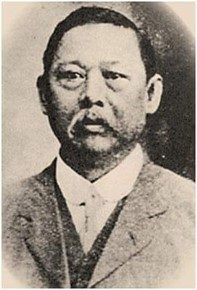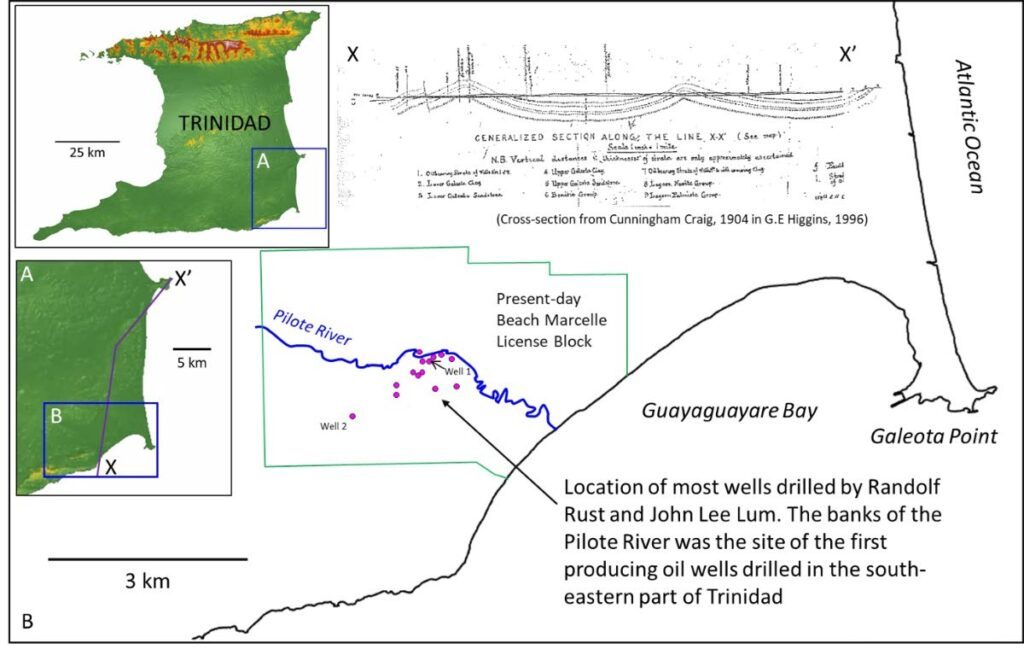From railroads to rigs to retail: Legacy of John Lee Lum

DR ADRIAN TUITT
It is hard to think of how a transcontinental railroad, a coin, an oil well and a Chinatown could be linked. But they are.
To understand why, we must take a trip to the past and understand the life of an entrepreneur who would forever change the socio-economic landscape of Trinidad.
In 1847, John Lee Lum was born in Guangdong, China. He migrated to California, where he worked with thousands of other Chinese migrants in the gold mines.
He also worked alongside more than 11,000 Chinese migrants to build a Pacific Railroad (Transcontinental Railroad) from 1863-1869. This railroad connected the existing eastern US rail network at Iowa to the Pacific Coast at San Francisco Bay, reducing the time it took to cross the continent from months to days.
In 1885, Lee Lum came to Trinidad, practically penniless. He lived among a community of Chinese immigrants who originally came to Trinidad as indentured labourers, mostly from the Guangdong province, comprising Macao, Hong Kong and Canton (Lee Lum was also born in this province).
The first wave of Chinese migrants arrived in 1806 to supplement the labour force on the sugar plantations, and the second after the abolition of slavery in 1934, between 1853 and 1866, to work on the sugar and cocoa plantations.
Most of the Chinese indentured labourers who remained in Trinidad quickly reverted to being launderers and shopkeepers.
Against this backdrop of Chinese shops and laundries, Lee Lum set up a provision shop on Charlotte Street, Port of Spain, where he traded provisions for dried cocoa beans.
These cocoa beans were then exported, as there was a boom in the price of cocoa at this time.
In addition to cocoa beans, he exported coffee and copra and imported goods from the Far East.

By 1900, he owned a chain of 60 shops in villages throughout Trinidad, and sent for labour from China to staff them. These new immigrants often comprised families and friends of earlier migrants, and worked as mainly merchants, pedlars, traders and shopkeepers.
This undoubtedly contributed to the third wave of Chinese migration, heightened in 1911 as a result of the Chinese revolution against the Qing Dynasty.
In the 1890s, there was a shortage of coins in Trinidad. At his La Brea shop, Lee Lum created his own currency in the form of square metal tokens with a hole in the middle so that the coins could be tied together.
He invested his wealth in buying vast cocoa estates in South Trinidad and in the Montserrat Hills near Gran Couva. These estates paid their workers with IOU slips called "chits" and would be taken to his shop to be exchanged for goods.
Lee Lum also bought land at Pointe Gourde in Chaguaramas for quarrying subsoil suitable for road material.
One of the major contributions of John Lee Lum was his role in the development of the oil industry.
The first recorded oil well successfully drilled in Trinidad was in 1866, by Captain Walter Darwent of the Paria Petroleum Company Ltd, in Aripero, close to La Bread.
Oil production and refining, however, were difficult, and Trinidad’s oil industry remained dormant for another 40 years.
It was Randolph Rust and John Lee Lum who would breathe life again into it. Around 1900, Lee Lum noticed seepages of oil on a piece of land he owned in Guayaguayare. These seepages had been observed earlier, in the 1880s, by a surveyor along the coast.
Lee Lum took a sample of the oil to Rust, a London-born businessman living in Port of Spain. He owned adjacent properties in the Guayaguayare area and began exploring for oil in the early 1900s. Lee Lum provided the initial funding for oil exploration, and in 1906 they formed General Petroleum Properties of Trinidad. They were further funded by Canadian financial banking.
The Guayaguayare field is reported to be the first oil field discovered in Trinidad.
At the time, Guayaguayare was rich in virgin forest. Coconuts were the main crops and some cocoa was also grown while fishing and foresting were the main occupations.
The main means of communication was the government steamer which went round the island twice a week and most of the land transportation was along the Mayaro and Guayaguayare beaches.
Getting the drilling equipment from the US to Trinidad presented no real issue. However, there were many difficulties in moving equipment from Port of Spain to the well site.
The Pilote River was cleared and a landing stage was constructed. A road was then laid on a track cut through the forest to the first site and later a light railway was laid down.
The first shipment of equipment was done via sailing boats and barges (towed by the government steamer).
The barges were then poled up the Pilote River. From the river jetty, the materials were dragged by oxen and mules.
Canadian drillers and a group of villagers mainly from Mayaro and Guayaguayare villages were employed by Rust and Lee Lum.
Accommodation for workers was erected using local lumber. Labourers would eat chip chip, plantain, rice and plenty of wild game which abounded in the forest at the time.
Mosquitoes and sandflies were a constant nuisance and malaria often afflicted the camps.
In 1902, the first commercially viable well was drilled using a pole system of percussion drilling. The well was drilled to 1,015 deep producing 100 barrels of oil per day.
Eight more wells were drilled with the method of rotary drilling at depths below 600 feet and most of these were reported to have struck oil.
However, after five years Rust and Lee Lum abandoned Guayaguayare without making any commercial shipments, as it proved impossible to transport the oil out of the field.
Consequently, the Guayaguayare field was not the first commercial field in Trinidad. The first commercial oil field was actually the Point Fortin Field (called Guapo at the time) drilled by Arthur Beeby Thompson of Trinidad Petroleum Co and started commercial oil production in 1908.
In 1910, the first export cargo of crude oil was shipped by tanker from Brighton, La Brea. Furthermore, a small refinery was built at Point Fortin in 1912.
In 1913, Trinidad Leaseholds Ltd took over the Guayaguayare wells of Rust and Lee Lum and opened a refinery at Pointe-a-Pierre in 1917.
Lee Lum was a supporter of the local Chinese community and his Charlotte Street office in Port of Spain became the headquarters for the Chinese community. He had three sons – Adrich, Edwin and Oliver – who were educated in the US and England and returned to Trinidad to take over the family business in the 1920s. The businesses specialised in importing Chinese goods and wares.
Lee Lum retired in Hong Kong and died in 1921.
Elon Musk, one of the richest people in the world, once said, "Try to be useful. Create products and services that people want and make their lives better. That's it."
Lee Lum had done just that: making meaningful contributions in his time to business, trade, the oil industry and culture in Trinidad.
He left a legacy to be remembered.

Comments
"From railroads to rigs to retail: Legacy of John Lee Lum"